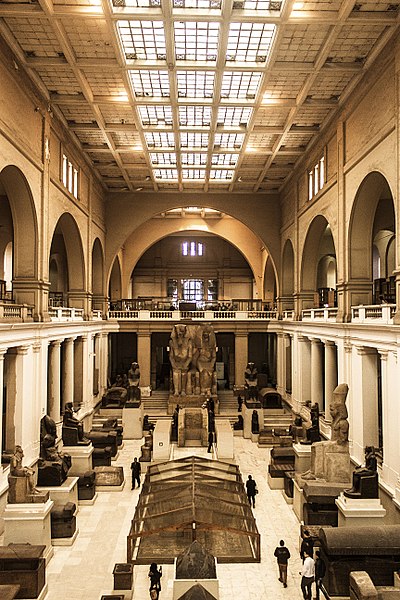
The Ministry of Tourism and Antiquities has released another episode in its series of virtual and guided video tours of a wide array of museums and archaeological sites around Egypt.
With this initiative, you will embark on a different kind of journey through the Egyptian civilization in the famous Egyptian Museum. 20 pieces will be displayed by the museum to recount the story behind each of them.
This episode will feature a vase in the shape of a Trussed Goose.
This vase is 65-centimeter tall and shaped like a trussed goose with its feathers plucked.
Its wings and legs can be clearly seen on its sides, whereas its curled neck and head creatively from its rim.
It dates back to 1935 and was discovered in one of the underground galleries beneath the Step Pyramid of King Djoser (c.2667–2648 BC) in Saqqara, according to a press statement issued by the Ministry of Tourism and Antiquities.
The shape of the vase suggests that it may have been used to store goose oil, or perhaps even dried up goose for consumption in the afterlife. It is one of many stone vases and fragments of vases discovered in the Step Pyramid’s substructure.
Interestingly, even though Djoser was a king of the Third Dynasty, these are the names of kings from the preceding Second Dynasty (c.2890–2686 BC). It is believed that Djoser wished to keep his predecessors’ possessions safe by collecting them and storing them in his house for eternity—his tomb. In doing so, he, thus, forever associated himself with his ancestors.
The Egyptian Museum in Cairo contains an extensive collection of pharaonic antiquities. The original collection was established in the late 19th century under Auguste Mariette and housed in Boulaq.
The objects were moved in 1891 to the palace of Ismail Pasha in Giza before being transferred in 1902 to the current building at Tahrir Square.
The Egyptian Museum features 120,000 items with a large amount on display and the remainder in storerooms. It was constructed in 1901 by the Italian construction company Garozzo-Zaffarani, and designed by French architect Marcel Dourgnon.
The initiative, which was recently launched under the slogan “Experience Egypt from Home. Stay Home. Stay Safe,” aims to enable people worldwide to embark on a journey through ancient Egyptian civilization while confined at home because of precautionary measures taken to combat the coronavirus outbreak.
This and all of the museum’s other tours are available on the Ministry’s official website and Social Media platforms (Facebook, Instagram, Twitter and Experience Egypt).
Photo caption: The Egyptian Museum’s main hall in Cairo.




